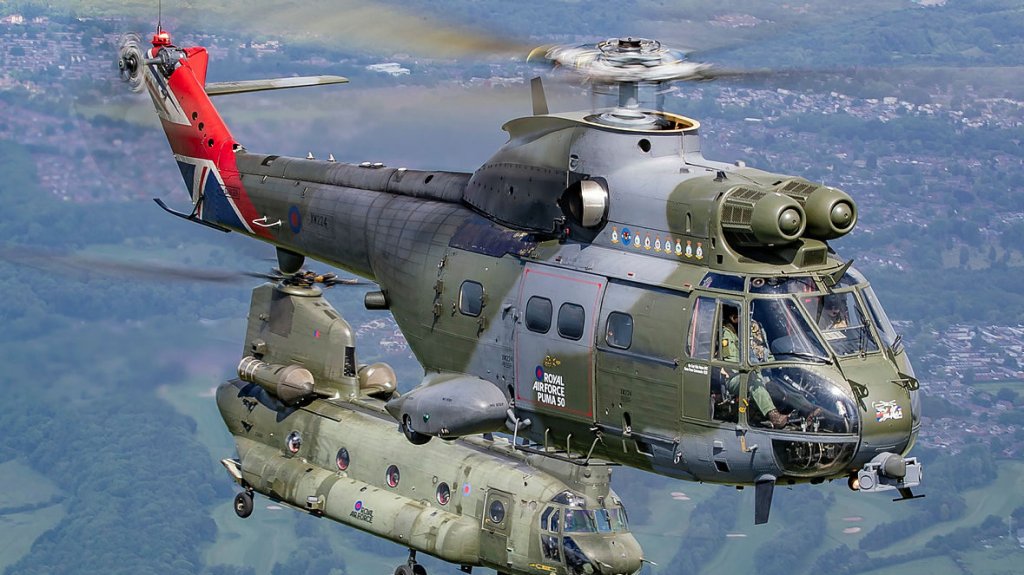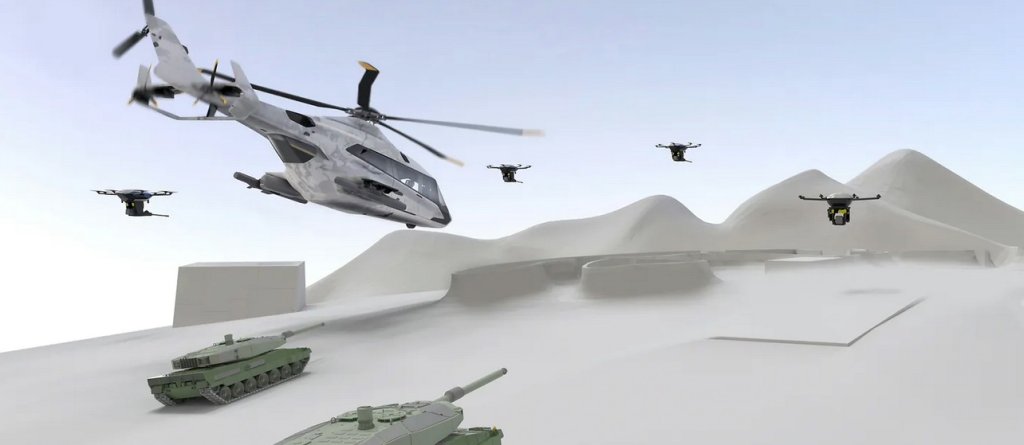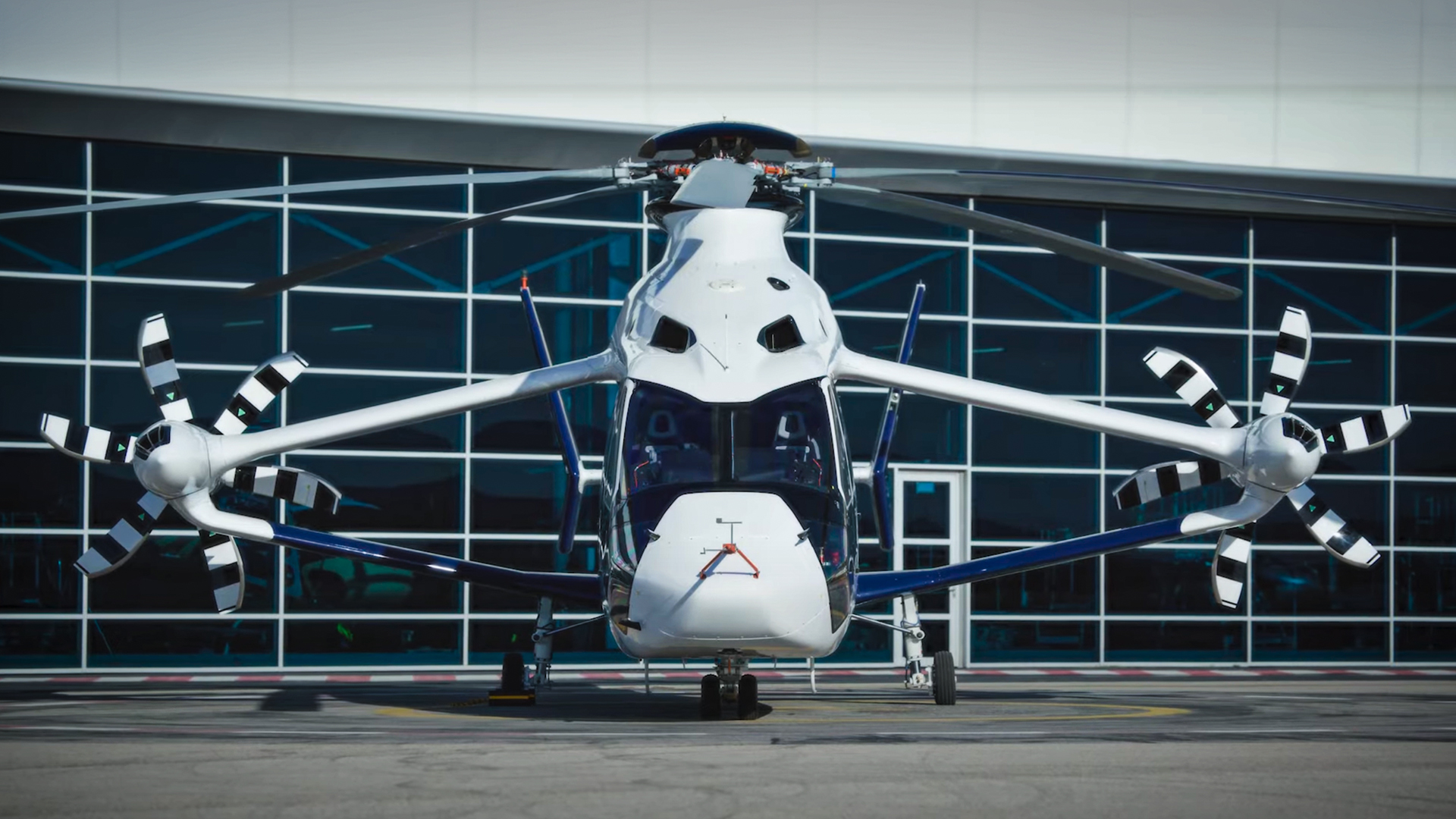NATO, seeking to replace its aging fleet of helicopters, awarded three contracts on Friday to provide parallel concept studies for a new medium-lift, multirole rotorcraft. The alliance hopes to field that aircraft beginning in 2035.
Airbus Helicopters, Lockheed Martin Sikorsky, and Leonardo were each awarded 13-month contracts to provide those studies under NATO’s Next Generation Rotorcraft Capability (NGRC) program.
Dubbed “Concept Study #5, the goal is to “provide a broad range of potential concepts” to help participating nations choose what kind of vertical lift platform they want in the future. The NGRC program initiative began in 2022 and includes France, Germany, Greece, Italy, the Netherlands, the United Kingdom, and Canada. It was initially created with €26.7 million ($28.98 million) dedicated to defining the future of their helicopter fleets. The United States and Spain are currently acting as observers.
“The contracts will provide perspectives on potential platform concepts aiming to identify and exploit cutting-edge technologies to meet operational and supportability capabilities,” the NATO Support and Procurement Agency (NSPA), the alliance’s purchasing unit, said in a statement. “They will also seek innovation in digital design and development processes and advanced materials and manufacturing.”

“In parallel, these three contractors will provide valuable, independent perspectives on potential integrated platform concepts that can meet the NGRC challenge, aiming to identify and exploit cutting-edge technologies to meet the NGRC operational and supportability capabilities, as well as seeking innovation in digital design and development processes and advanced materials and manufacturing,” according to NSPA.
“A significant amount of the medium multi-role assets currently in service by Allies will reach the end of their life cycle in the 2035-40 period and beyond, with the subsequent need for replacements,” according to NATO. The alliance currently flies AW101s, UH-60 Black Hawks, Super Pumas and NH90s.

“These existing inventories are all based on designs dating back to the previous century,” NATO stated. “The aim of the NGRC initiative is to respond to this upcoming requirement, in a timely and cost-effective manner, while concurrently leveraging a broad range of recent advances in technology, production methods, and operational concepts.”
At this stage in the process, NATO is agnostic when it comes to the choice of a traditional helicopter or non-traditional rotary aircraft. The alliance does, however, have many “required attributes” that the ultimate winning design must have, according to procurement documents.
Included among many others is that the fly-away cost should be no greater than €35 million ($38.05 million) and the cost per flight hour should optimally be €5,000 ($5,400) but no greater than €10,000 (($10,870) based on 2021 values.
In addition, the aircraft must be optionally crewed with a remotely piloted option. They need to perform a wide range of missions and rapidly switch between configurations. The future rotorcraft need an optimal cruising speed of 220 kts or more and be able to team with drones, launch and recover smaller drones, and operate drone swarms as well.
Airbus is partnering with RTX’s Collins Aerospace and Raytheon businesses and MBDA on a concept it said will likely be based on its innovative Rapid And Cost-Effective Rotorcraft (RACER) high-speed helicopter. That design replaced the traditional tail rotor with a pair of propellers on either side of the aircraft.

RACER is a civilian aircraft funded by the Clean Sky program from the European Commission and Airbus doesn’t see converting it into a military one. However, it will incorporate the lessons learned from that design into what it will present to NATO, the company said in a statement.
“The hybrid concept however could be used for a military platform after significant development studies,” the company stated. “At the core of our offer, there will be a next-generation rotorcraft (NGR). We think this aircraft should be able to fly fast and go far.”
Of note is that the concept art provided by Airbus features the traditional rotor plus propellers to the rear on either side of the aircraft plus a tail rotor. It also features hardpoints for missiles and other stores on both sides of the fuselage. In addition, the rendering also includes four armed drones accompanying the aircraft.

Lockheed Martin Sikorsky’s concept will be based on the Sikorsky X2 compound-pusher, rigid-rotor technology demonstrators with input from lessons learned from Lockheed Martin’s S-97 Raider.
“With more than $1 billion invested and 15 years of testing and flying, X2 rotorcraft, Sikorsky’s X2 aircraft are demonstrating mission relevance,” Andy Adams, vice president of Sikorsky Future Vertical Lift, said in a statement. “The S-97 Raider technology demonstrator’s rigorous flight test program continues to provide critical data that correlates to a virtual prototype and enables Sikorsky to experiment with the unique capabilities that an X2 Technology rotorcraft can provide.”

Leonardo, which is partnering with Bell, will pitch a tilt-rotor concept. Bell worked with Boeing to create the V-22 Osprey, which has long been in service with the Air Force, Navy and Marines despite numerous problems. The company’s V-280 Valor has posted hundreds of flight hours in its flight test campaign and notched more than the 280 knots speed it was named for and designed to achieve.
“The requirements set under the NGRC initiative imply capabilities that would best be delivered by a fast rotorcraft architecture, also including high speed and long range,” Bell said in a statement. “Our proposal will be developed around advanced tiltrotor concept studies, leveraging the solid and established experience of the Leonardo consortium team. These studies will benefit from the collaboration among the key leading industry players grouped in our consortium, including Bell, General Electric, Hensoldt, Leonardo DRS, MBDA Italia, NLR, Rolls Royce and Safran. The team is committed to delivering strong conceptual solutions to fulfill the operational requirements expressed by NATO.”

The NATO Study #5 contract award breathes new life into the aircraft developed by Lockheed Martin Sikorsky.
In February, the U.S. Army canceled one of its highest-profile aviation programs, the Future Attack Reconnaissance Aircraft (FARA). The company’s Raider-X prototype was one of two finalists for that contract. Bell’s 360 Invictus was the other prototype in that program. You can read more about that in our deep dive here.
Meanwhile, Lockheed Martin’s SB-1 Defiant lost out to Bell’s V-280 Valor in the competition for the Army’s Future Long-Range Assault Aircraft (FLRAA) program. The fact that Bell is now moving forward on the U.S. Army’s future medium-lift helicopter could give it a major leg up a final competition for this new helicopter, especially considering how risky new rotary-wing technology can be. Also of interest is that no mention is made of the SB-1 Defiant, which is the bigger brother of the Raider-X, an aircraft much closer in size and capabilities to what NATO is looking for here.
The contracts awarded today are part of a five-phased NATO study effort to develop a rotorcraft that can meet its future needs.
“Vertical multi-role capabilities play a crucial role in the force structure of NATO Allies,” NATO said in its justification for the NGRC program. “Within this context, medium multi-role helicopters offer a large degree of versatility. Their operational use incorporates a wide range of missions, including tactical operations.”
Those missions include insertion and extraction of Special Operation Forces; transport of small and medium-sized cargo and troops into, out of, and within operational theaters; medical evacuation; search and rescue; and anti-submarine warfare.
The size of the medium-lift rotorcraft “allows them to take off and land in topographically restricted areas, such as forest glades or mountain ranges, adding to their operational flexibility,” NATO added.
There is still a long way to go in this program and it will be years before a down select for one particular concept is made. Even getting to that point will be a challenge as all multi-national aircraft development and procurement efforts are fraught with pitfalls. There is also huge upside in scale and commonality to be realized if successful. Still, today’s contract awards represent a significant step in an attempt to realize a new common NATO medium-lift helicopter.
Contact the author: howard@thewarzone.com
